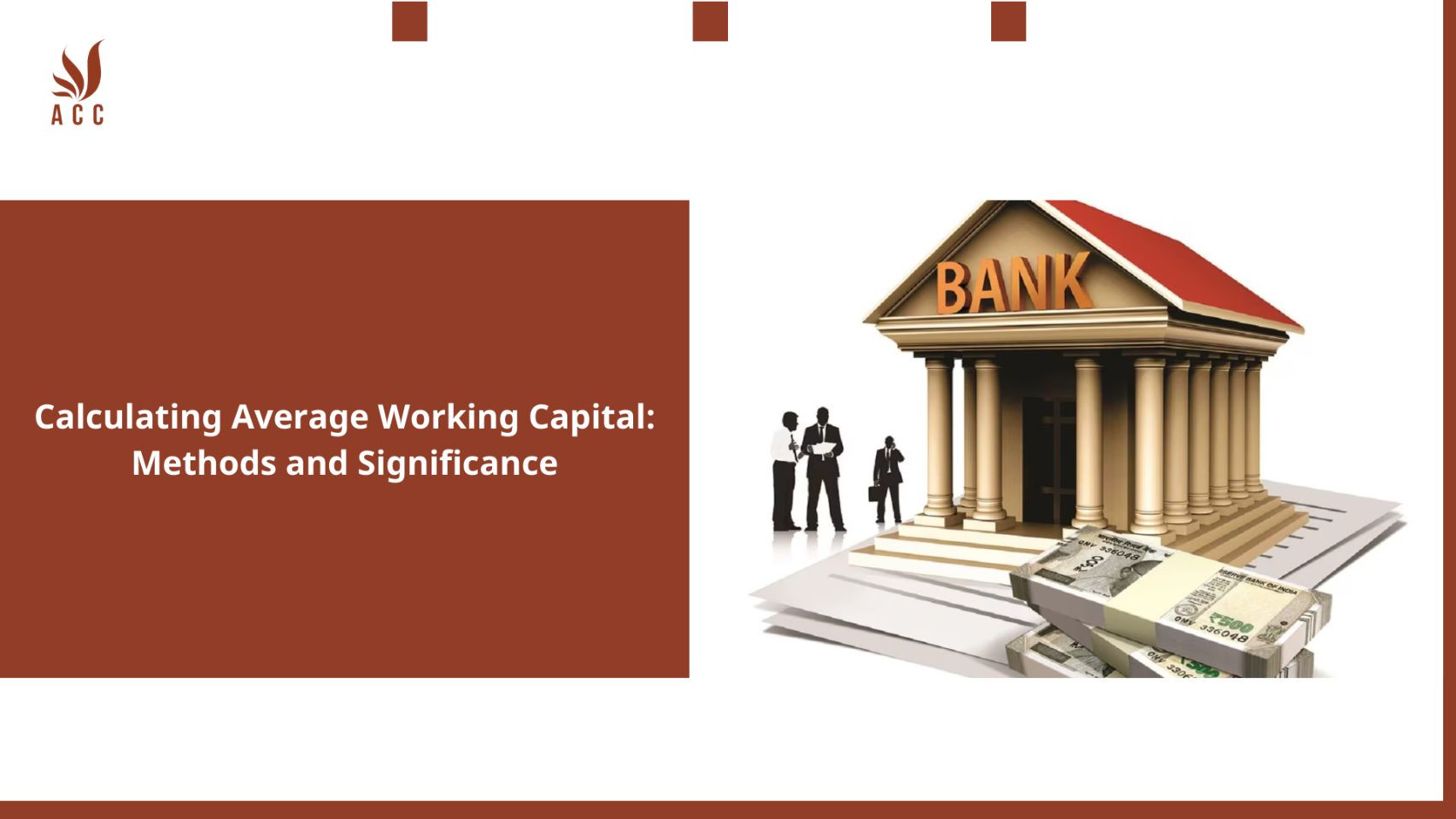In the world of finance and business management, one of the critical metrics that can make or break a company's success is the Working Capital Turnover. This ratio assesses how efficiently a company utilizes its working capital to sustain its operations, facilitate growth, and ultimately turn a profit. So, what doess dissolving a limited company mean? ACC Group will address your question.

I. How can one calculate the average working capital?
Calculating the average working capital involves finding the average of a company's working capital over a specific period, which typically helps in assessing the company's short-term liquidity and operational efficiency. Working capital is the difference between a company's current assets and current liabilities.
II. Understanding Working Capital Turnover: A Key Metric for Business Efficiency
The Working Capital Turnover Formula
To calculate this vital metric, you can use one of the following formulas:
Formula 1:
Working Capital Turnover = Net Annual Sales / Average Working Capital
Formula 2:
Working Capital Turnover = Average Working Capital / Net Annual Sales
In these formulas:
-
Net annual sales represent the sum of a company's gross sales minus its returns, allowances, and discounts over the course of a year.
-
Average working capital is determined by calculating the average of current assets minus average current liabilities.
Decoding the Significance of Working Capital Turnover
Now, let's delve into what this ratio reveals about a company's operations and financial health.
High Turnover Ratio
When a company boasts a high turnover ratio, it's a positive sign. This suggests that the management is exceptionally efficient in utilizing the company's short-term assets and liabilities to bolster sales. In simple terms, it implies that the company generates a higher dollar amount of sales for every dollar of working capital used.
Low Turnover Ratio
On the other hand, a low working capital turnover ratio can be a cause for concern. This may indicate that a business is heavily investing in accounts receivable and inventory to support its sales, which could potentially result in an excessive amount of bad debts or obsolete inventory.
To gain deeper insights into a company's efficiency in utilizing its working capital, analysts often compare its working capital ratios with those of other companies in the same industry and analyze how the ratio has evolved over time. However, it's essential to note that such comparisons can become meaningless when the working capital turns negative because the working capital turnover ratio also becomes negative.
Working Capital Management - Ensuring Smooth Operations
Effective working capital management is crucial for a company's sustained success. It involves close monitoring of cash flow, current assets, and current liabilities through various ratio analyses. The key elements include working capital turnover, the collection ratio, and inventory turnover ratio.
This approach helps maintain the smooth operation of the net operating cycle, also known as the cash conversion cycle (CCC). The CCC represents the minimum amount of time required to convert net current assets and liabilities into cash. If a company lacks sufficient working capital to meet its obligations, it may face financial insolvency, leading to legal issues, asset liquidation, and potential bankruptcy.
Managing Working Capital Efficiently
Companies ensure efficient working capital management by actively overseeing inventory, accounts receivables, and accounts payable. Two vital ratios come into play here:
Inventory Turnover
This ratio reflects how many times a company has sold and replaced inventory during a specific period.
Receivable Turnover Ratio
It measures how effectively a company extends credit and collects debts on that credit.
Special Considerations
While a high working capital turnover ratio suggests that a company is running smoothly and has limited need for additional funding, it may also indicate that the business lacks enough capital to support its growth. This can potentially lead to insolvency unless additional capital is secured to fuel that growth.
Additionally, when a firm's accounts payable are notably high, it may signal that the company is struggling to meet its financial obligations promptly.
Example: Understanding the Working Capital Turnover Ratio
Let's illustrate this with a straightforward example:
Imagine that Company A achieved $12 million in net sales over the past 12 months. During the same period, the average working capital stood at $2 million. By applying the first formula, we calculate the working capital turnover ratio as $12,000,000 / $2,000,000, resulting in a ratio of 6.0. In simple terms, for every dollar of working capital invested, Company A generates $6 in revenue.
III. Conclusion
In the complex world of finance and business management, the Working Capital Turnover ratio stands out as a crucial metric that can make or break a company's success. It reflects how efficiently a company utilizes its working capital to support sales and growth. A high turnover ratio is a sign of operational efficiency, while a low ratio might indicate potential issues. To ensure business health, it's essential for companies to actively manage their working capital and keep a close eye on key ratios.
IV. Why should professionals use ACC Law Firm's capital Service?
- Expertise in Legal Matters: ACC Law Firm specializes in providing legal services, which means they have a deep understanding of the legal intricacies and requirements associated with capital transactions. This expertise can be invaluable when dealing with complex financial and legal matters.
- Customized Solutions: ACC Law Firm is likely to offer tailored solutions to meet the specific needs of professionals. Whether you are an individual or a business, their team can work closely with you to create a financial strategy that aligns with your goals and objectives.
- Risk Management: Capital transactions often involve various risks, including legal and financial risks. ACC Law Firm can help professionals navigate these risks effectively, ensuring compliance with regulations and minimizing potential legal liabilities.
- Regulatory Compliance: Professionals must adhere to various laws and regulations when raising capital or engaging in financial transactions. ACC Law Firm can provide guidance and ensure that all legal requirements are met, reducing the risk of legal disputes or penalties.
- Legal Documentation: Capital transactions typically require extensive legal documentation, such as contracts, agreements, and prospectuses. ACC Law Firm's expertise can help professionals draft and review these documents to protect their interests and ensure accuracy.
Q&A
1. What is working capital turnover?
2. Why is a high working capital turnover ratio desirable?
3. What does a low working capital turnover ratio suggest?
4. How can companies effectively manage their working capital?
Nội dung bài viết:






Bình luận